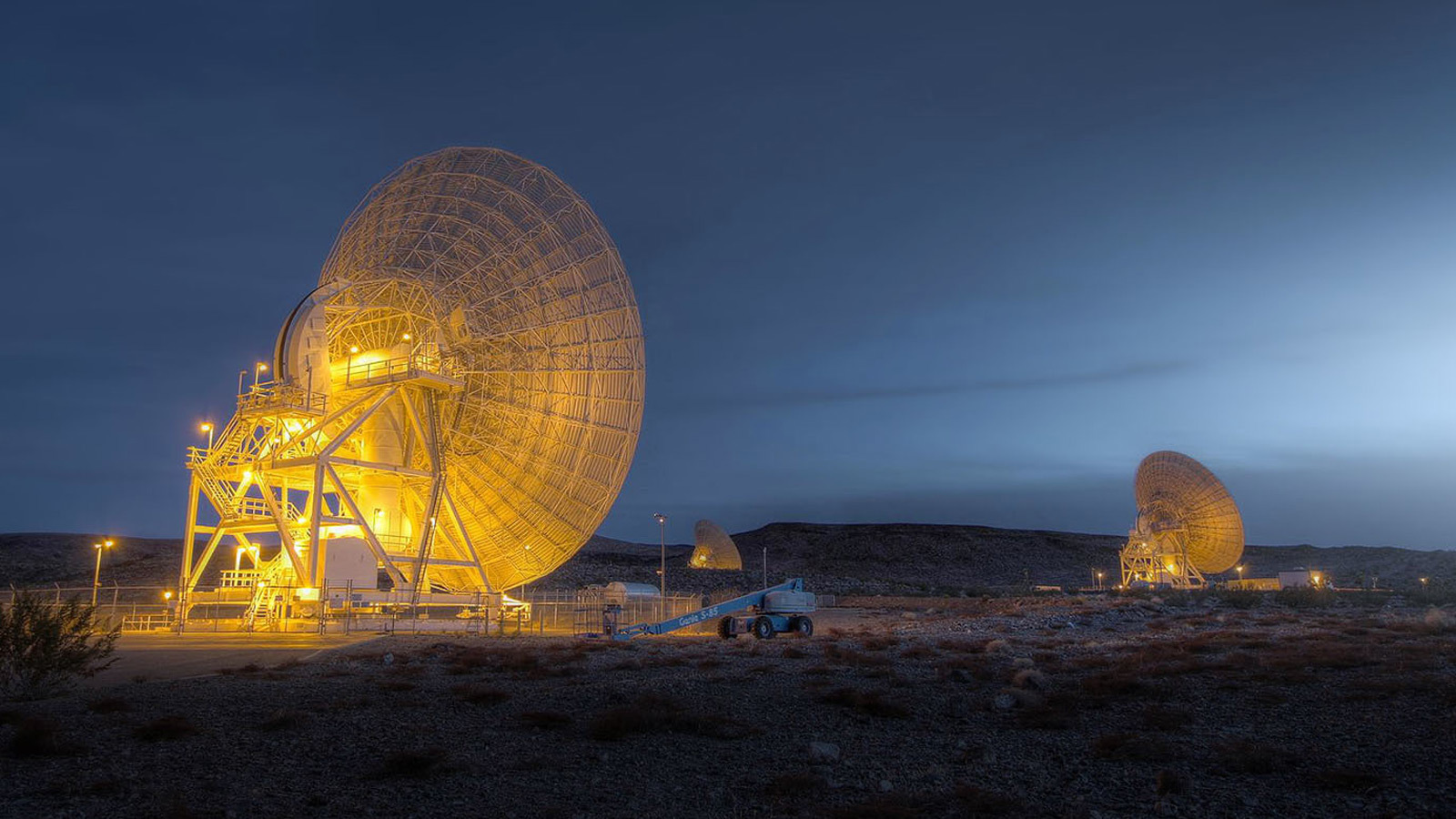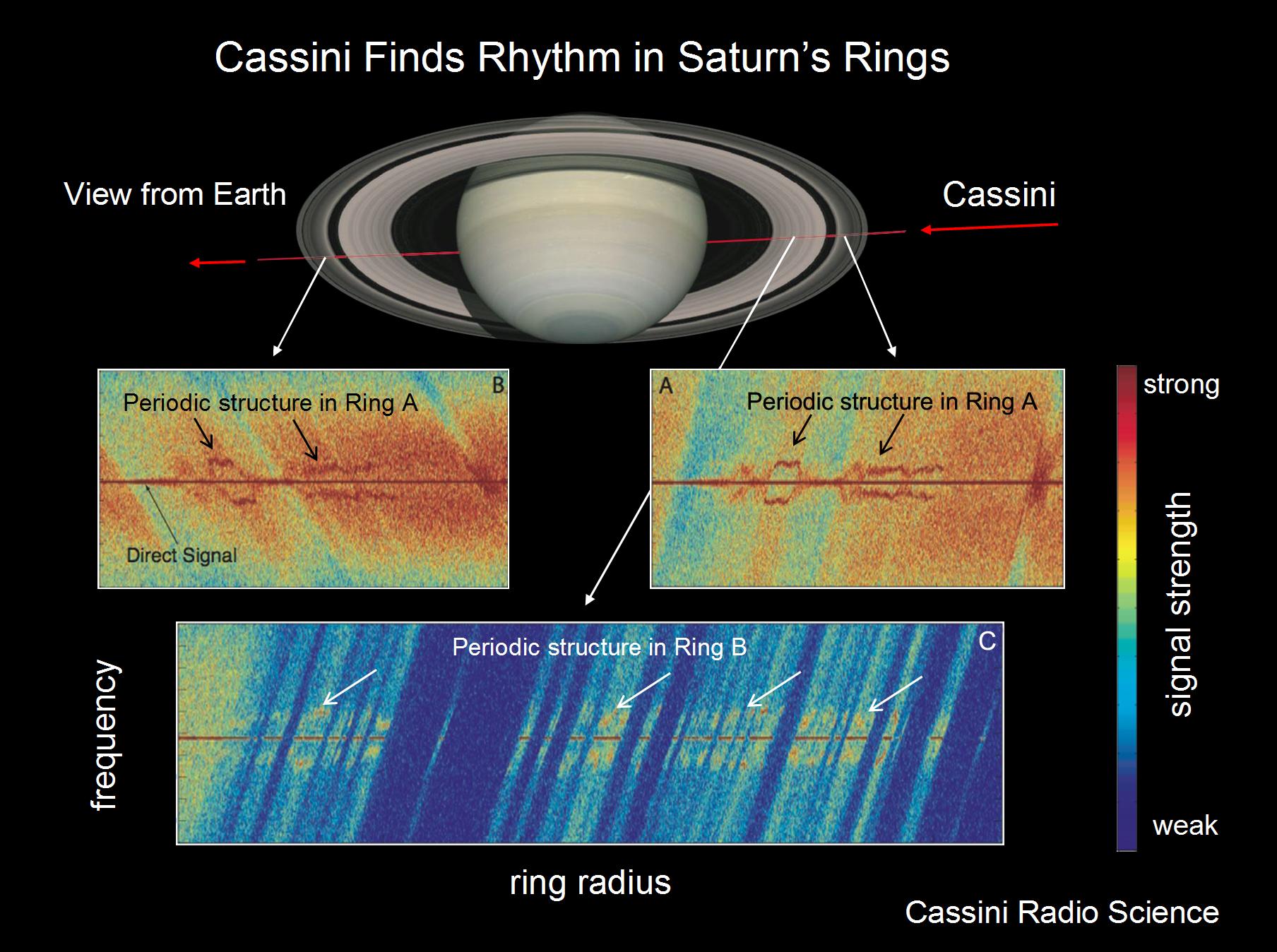Radio Science Subsystem

How It Worked
Radio waves are altered as they travel through a gas, bounce off a surface or pass near a massive object. By sending radio signals through, near or even bouncing off of objects in the Saturn system, Cassini's Radio Science Subsystem helped scientists learn about the objects with which the radio waves interact.
How We Used It
The Radio Science Subsystem sent radio signals from Cassini to Earth using the spacecraft’s large radio dish called the high-gain antenna. En route, the radio signal interacted with Saturn’s moons, rings or Saturn's atmosphere. When the signals reached Earth, scientists studied how the signals were altered, which helped them learn about gravity fields, atmospheric structure, composition, ring structure and particle sizes, surface properties and more.
The researchers who studied the Saturn system using Cassini’s instruments are accustomed to waiting.
The spacecraft’s high-gain antenna had to be pointed toward Earth in order to send its data. But often the spacecraft faced a different direction because one or more of its instruments were observing a specific target. Sometimes a moon, or the planet, was between the spacecraft and Earth, so Cassini stored its data until it could be beamed to Earth later.
Researchers had no choice but to wait for hours, or sometimes days, before getting their hands on data that’s been sitting on the spacecraft, waiting to be transmitted. Not the case for Cassini’s Radio Science Subsystem. As soon as its data was collected, it was already on Earth.
For the radio science instrument, the radio signals that Cassini transmitted to Earth were the experiment, and the NASA Deep Space Network complexes in Australia, Spain and the U.S. were part of the instrument. “It is the only Cassini experiment whose data you can watch in real time,” said Cassini radio science team member Essam Marouf of San Jose State University. And despite the more than 900-million-mile (1.5-billion-kilometer) journey the signal took from Cassini to Earth, the instrument was extremely sensitive. “Even if you place a sheet of paper in its path, we could sense the change in the Earth-received signal,” Marouf said.
Researchers used the instrument to study the Saturn system in several ways, such as sending the signal through Titan’s atmosphere, or Saturn’s. When the signal reached Earth, researchers look at how the signal was “bent,” according to Richard French, team leader for the radio science experiment at Wellesley College, Wellesley, Massachusetts.
“The amount of bending depended on the density of the atmosphere, and the density of the atmosphere depends on the temperature and pressure of the atmosphere,” French said. “Thus we can infer from our radio signal how much bending there was, how much refraction there was, and from them we determine what the atmosphere’s temperature was.” By repeating the observation, Cassini's radio science team determined the overall structure of Saturn’s atmosphere (and that of its giant moon Titan) in different locations and across seasons, he said.
The radio science team also studied Saturn’s rings. The instrument sent out three different wavelengths of radio waves -- known as the X, Ka and S bands -- to measure the sizes of particles in the rings and investigate ring structure.

The radio science instrument even used gravity to see inside worlds. “If there is a liquid ocean in a moon, its gravitational field will be different [compared to its gravity without an ocean],” French said.
A moon’s interior affects its gravitational field, which affected Cassini’s orbit. A change in orbit then affected the frequency of Cassini’s signal to Earth because the radio waves get squished or stretched through the Doppler Effect. The radio science team looked at the altered radio frequency and traces it back to the effects of gravity. “We use the amount of frequency change to determine the speed of the spacecraft, and the speed of the spacecraft is governed by gravity,” French said. “So we don’t have to drill into a moon to infer that there’s an ocean under its surface.”
Through that technique, the radio science team helped determine that Saturn’s moons Titan and Enceladus probably have deep, subsurface liquid water oceans.
At a Glance
Cassini was the only deep space mission to transmit to Earth at three radio wavelengths (approximately 14 cm wavelength, designated S-band; 4 cm, designated X-band; and 1 cm, designated Ka-band) simultaneously.
- Mass (current best estimate) = 14.38 kg
- Peak Operating Power (current best estimate) = 80.70 W
- Peak Data Rate (current best estimate) = not applicable: carrier only (the RSS sensing devices are on Earth at the Deep Space Stations in California, Spain and Australia)
Cassini Orbiter Instruments
They surveyed and sniffed, analyzed and scrutinized. They took stunning images in various visible spectra. Cassini's 12 science instruments were designed to carry out sophisticated scientific studies of Saturn, from collecting data in multiple regions of the electromagnetic spectrum, to studying dust particles, to characterizing Saturn's plasma environment and magnetosphere.
Optical Remote Sensing
Mounted on the remote sensing pallet, these instruments studied Saturn and its rings and moons in the electromagnetic spectrum.
Fields, Particles and Waves
These instruments studied the dust, plasma and magnetic fields around Saturn. While most didn't produce actual "pictures," the information they collected is critical to scientists' understanding of this rich environment.
Microwave Remote Sensing
Using radio waves, these instruments mapped atmospheres, determined the mass of moons, collected data on ring particle size, and unveiled the surface of Titan.





